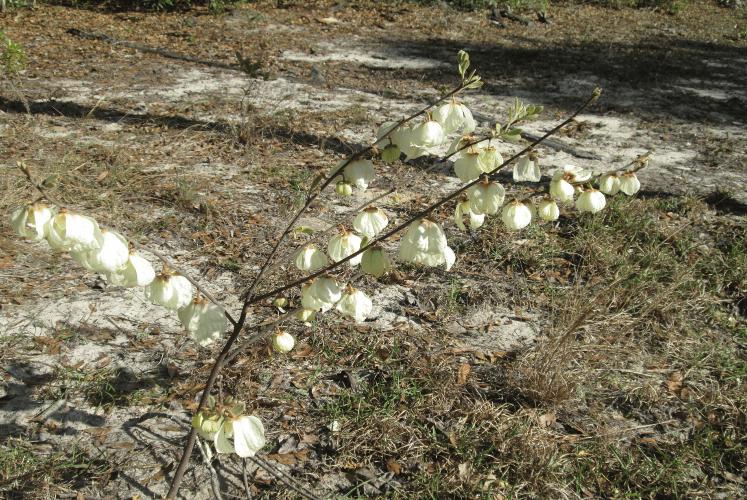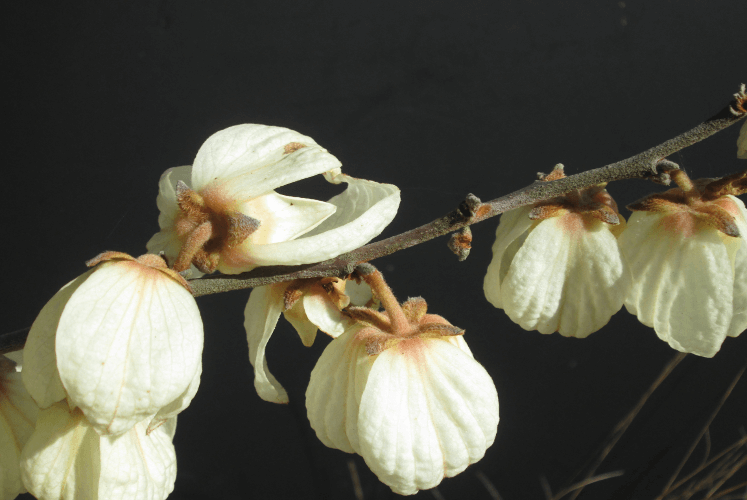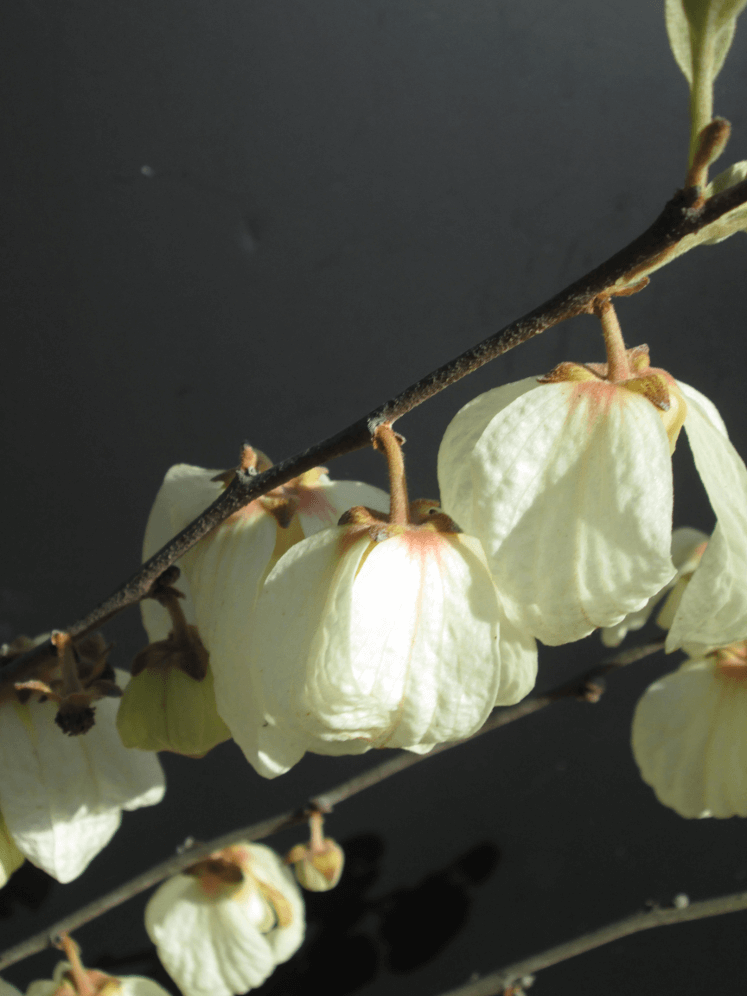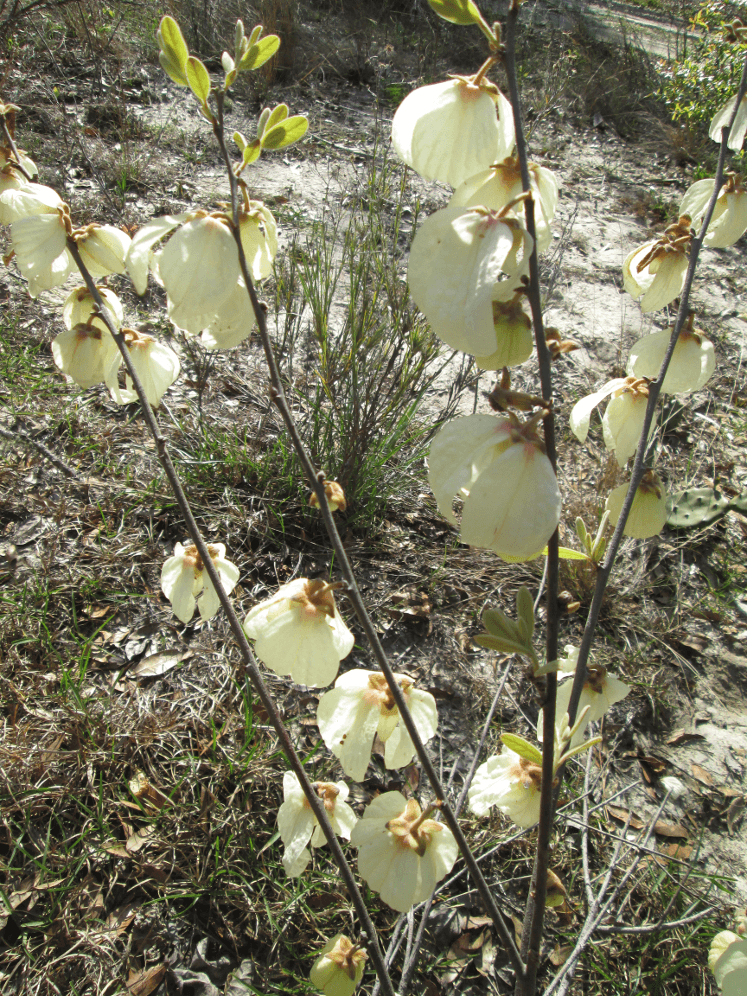Dwarf Pawpaws

Dwarf Pawpaws
Family ANNONACEAE (Custard Apple Family).
Pawpaws in pinelands “south of the Alatamaha River” (Georgia)….; See Bartram, Travels, 1791, Part I, Chapter III.
WOOLY PAWPAW, Asimina incarna (Bartr.) Exell.
…ascending some sand-hills, I observed a new and most beautiful species of Annona having clusters of large white fragrant flowers… He later reported this pawpaw from west of Spalding’s Lower Store.
The buds and beautiful white flowers appear on their 24-36 inch stems before or as the plant gets its leaves. The leaves are pale green with the tops and bottoms fuzzy with whitish-colored hairs. Their large ripened fruits are important food for wildlife. Look for this spectacular flowering shrub in late March and April in almost any sandhills, open sandy pastures or disturbed dry roadside in Putnam County. Crush a leaf of a pawpaw and you will smell the characteristic acrid odor…an easy method to distinguish pawpaws from other local plants.
DWARF PAWPAW, Asimina pygmaea (Bartr.) Dunal.
…a very curious species of Annona. It is very dwarf, the stems seldom extending from the earth more than a foot or eighteen inches, and are weak and almost decumbent. The leaves are long, extremely narrow, almost lineal.
The pygmy pawpaw is known from north Florida and Camden County, Georgia. Bartram claims his plants were found south of the Altamaha River in Georgia. Its flowers are pale green and vibrant maroon, with flowering and fruiting between May and June. Each flower has two whorls of three petals each. Flowers have both male and female parts but each part matures at different rates, so to limit self-fertilization. The fruits ripen for a short time before they spoil. Hybrids with A. incana are occasionally found with candy-striped white and maroon petals. Like wooly pawpaws, pygmy pawpaws occur in sandhill and flatwoods habitats, but they tend to be much less common.
Both pawpaws occur throughout Putnam County and represent host plants for caterpillars of the zebra swallowtail.
Two other kinds of pawpaws, reticulate pawpaw (Asimina reticulate) and narrowleaf pawpaw (Asimina angustifolia), are depicted in the flower mural in downtown Palatka, but neither one of them are mentioned by Bartram in his Travels.



